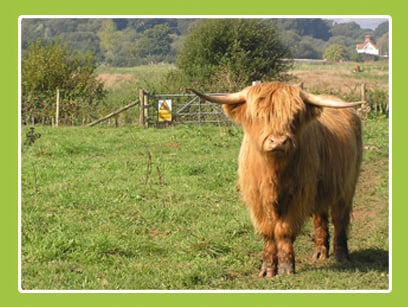ALVERSTONE MEAD
Where is Alverstone Mead ?
Alverstone Mead lies to the south-east of Alverstone, and south of the Sandown – Newport cycleway. The site was once part of the more extensive Lower Borthwood Farm. In 1993, the lease is held by the Wight Nature Fund, a local group, and they manage the site. The Isle of Wight Council owns the freehold.
The reserve has several public footpaths and can be reached from NC 44, which runs between Burnt House Lane and the new Sandown to Newchurch cycleway; and from footpath NC 17 from Alverstone Road. Other footpaths in the area connect to these.
When can I visit the reserve?
The reserve is always open for you to visit.
What is so special about Alverstone Mead?
| The site is on the old floodplain of the eastern Yar river, which is now canalised and acts to drain the marshes. The soils are mainly peat in the low-lying grasslands. Habitats include the low-lying grasslands, hay meadows, ditches and open water, and woodland. The hay meadows have received much agricultural improvement by spraying but the low-lying grasslands have benefited from low intensity grazing for a long time and have a wide variety of wet meadow species. |  |
The most westerly part of the grassland is slightly higher and is species poor, with yorkshire fog, meadow buttercup, crested dog’s tail, sheep`s sorrel and soft rush. The easterly parts are lower and less well drained, and contain a wide variety of sedges including carnation sedge, oval sedge, greater pond sedge, and brown sedge.
There is some fine unimproved grassland with marsh violet, devil’s-bit scabious, tormentil, marsh bird’s-foot trefoil and marsh pennywort. The pasture is used by a variety of over-wintering and passage birds including water rail, green sandpiper, common snipe, redshank, grey heron, and yellow wagtail. Resident birds using the grassland to feed include kingfisher, sedge and reed warblers and reed bunting. Skylarks are known to breed in the hay meadows.
There is some fine unimproved grassland with marsh violet, devil’s-bit scabious, tormentil, marsh bird’s-foot trefoil and marsh pennywort. The pasture is used by a variety of over-wintering and passage birds including water rail, green sandpiper, common snipe, redshank, grey heron, and yellow wagtail. Resident birds using the grassland to feed include kingfisher, sedge and reed warblers and reed bunting. Skylarks are known to breed in the hay meadows.
The large network of ditches has a great variety of plant species. The westerly ditches contain nodding bur-marigold, trifid bur-marigold, water plantain, branched bur-reed and unbranched bur-reed. Shaded ditches contain marsh cinquefoil. The eastern ditches are much more diverse with the above species present but also bogbean, blunt-fruited water starwort, bog pondweed, lesser pondweed, small pond-weed, yellow loosestrife and yellow flag iris. The ditch banks have plants such as meadowsweet, hemlock water dropwort, celery-leaved buttercup, water forget-me-not and cuckoo flower
 |
Water vole, palmate newt, frog and toad all use the ditches and grass snake is also present. Twelve species of dragonfly are present including the banded demoiselle, emperor, common hawker, gold-ringed and the ruddy darter.
There is an area of ancient woodland including Borthwood Lynch, an oak-hazel-ash wood grading into alder woods nearer the wetter areas. The ground flora includes bracken, bluebell, climbing corydalis, wood sorrel, primrose and red currant. In the damper lower woods, greater tussock sedge, yellow loosestrife, wild angelica, hemlock water dropwort, opposite-leaved golden saxifrage marsh marigold and stalked sedge are all found. Grey willow and alder dominate the wetter with the nationally rare marsh fern and the locally rare narrow-leaved buckler fern growing underneath. Animals in the woodland include dormice and red squirrels as well as three species of bat (noctule, serotine and pipistrelle). The insects present include wood cricket, white admiral, purple hairstreak, green hairstreak and orange tip. The alders are visited by siskin in winter and nesting species include woodcock and barn owl.
Page last updated on: 06/05/2009





